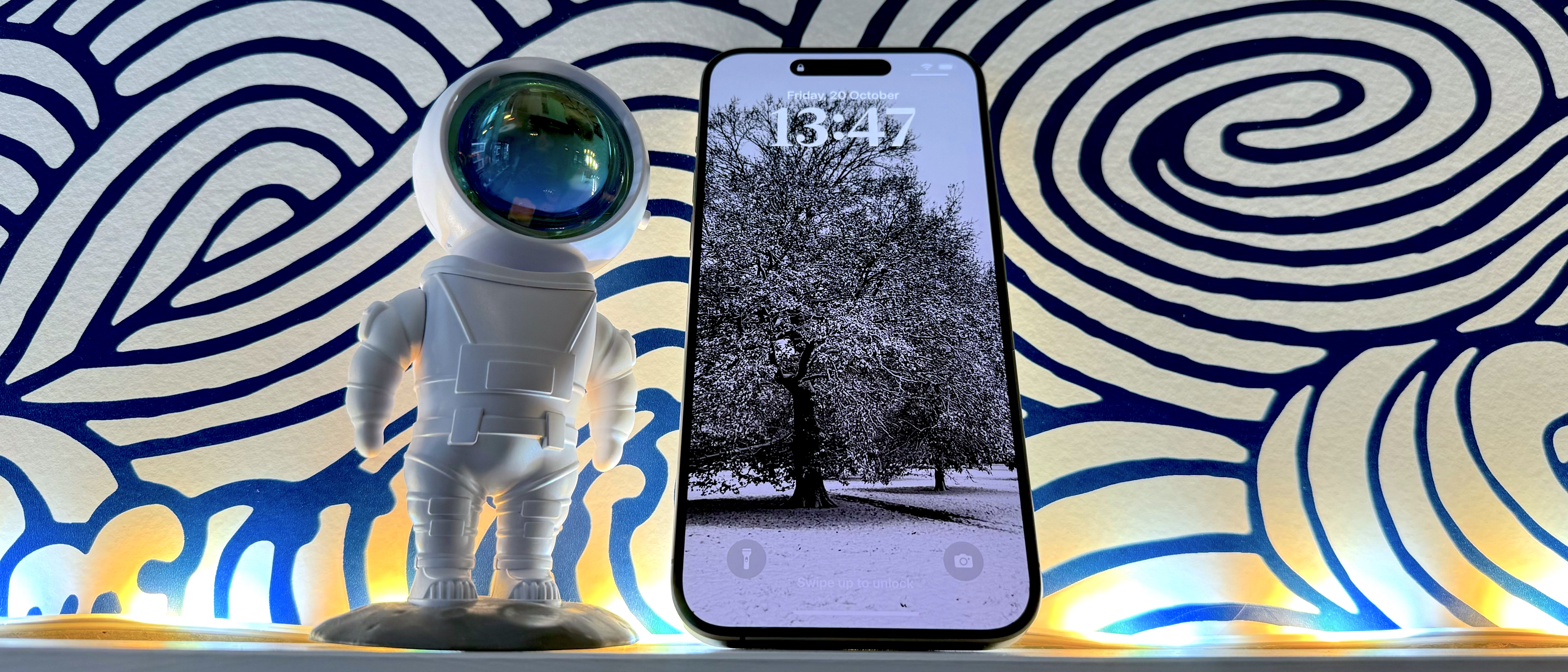iMore Verdict
The iPhone 15 Pro Max is the best iPhone Apple has ever made — and that's not just by virtue of a chip spec bump. By introducing USB-C data transfer and charging, a 5x optical zoom camera, a customizable Action Button and a weight-saving titanium construction, Apple made improvements all round. This is the handset against which all other smartphones must now be judged.
Pros
- +
Superb zoom camera
- +
USB-C … finally!
- +
Customizable Action Button
- +
Big screen, lighter weight
- +
Impressive graphics
Cons
- -
Titanium edges will discolor
- -
Charging speed remains the same
- -
Slow USB-C cable in the box
You can always trust iMore.
For years now, the iPhone has been a two-tier affair. At the entry level, you've got the standard iPhone and the Plus for those that need the extra screen real estate. Those wanting a premium experience then have to stump up for the Pro models, with the Pro Max there for those who want more screen space.
This year, with the iPhone 15 range, Apple has introduced a third tier. Until now, screen size aside, the Pro and Pro Max models have more or less been on par. That’s not quite the case with the iPhone 15 Pro Max and the iPhone 15 Pro. And it all comes down to the cameras; the iPhone 15 Pro Max features the most advanced camera array Apple has ever made. The iPhone 15 Pro has a good camera too, but not a match for the 15 Pro Max.
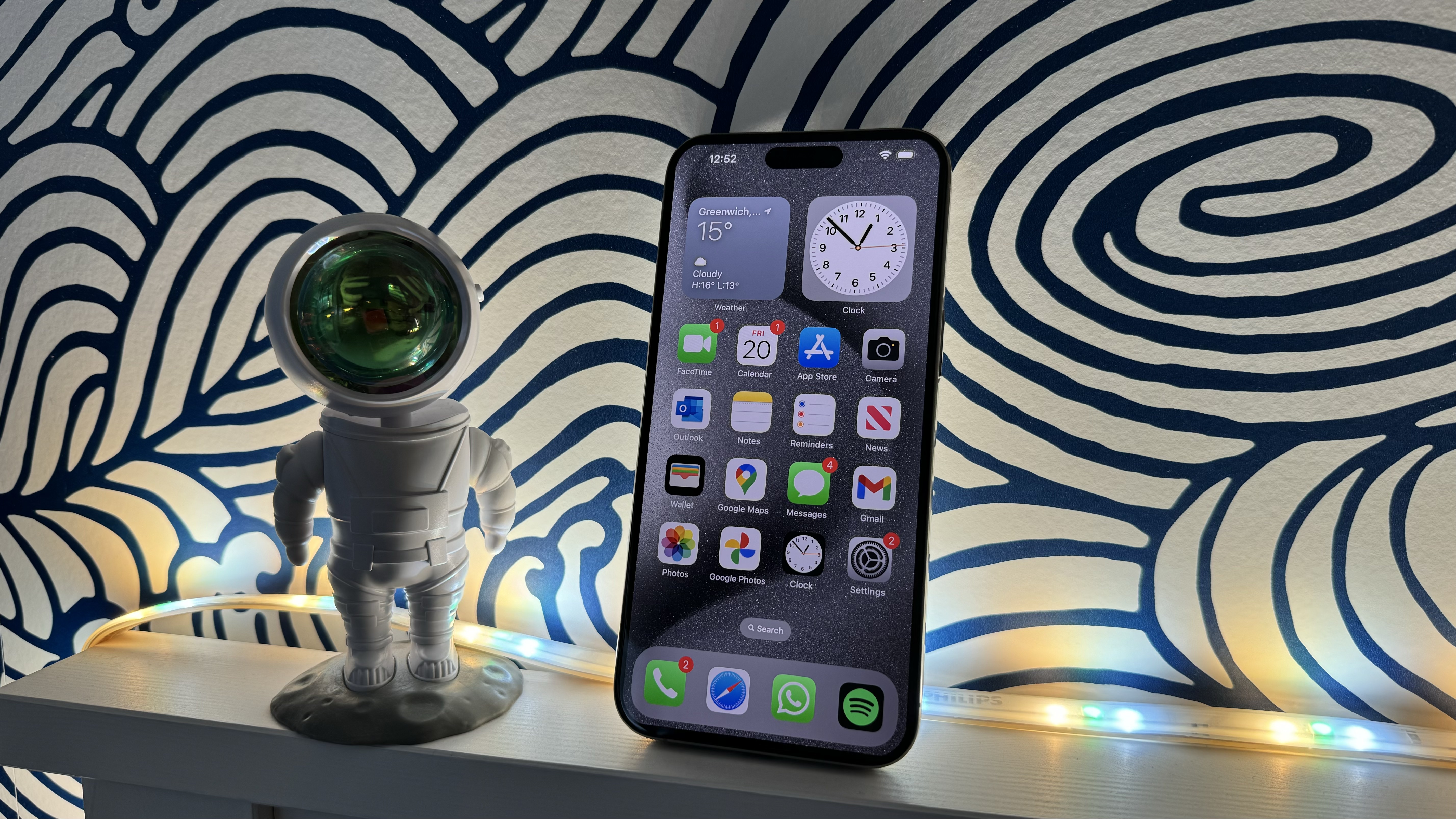
If you've been arguing which model is right for you, that may be all you need to know. The iPhone 15 Pro Max is the best iPhone Apple has ever made. But there are a string of other noticeable changes that are worth knowing about before you make the plunge and splash your cash.
Rest assured, the iPhone 15 Pro Max is the king of smartphones. Here’s how it has claimed that crown.
- Looking for something smaller? Read our iPhone 15 Pro review
iPhone 15 Pro Max Price and Availability
iPhone 15 Pro Max landed in stores on September 22 and is widely available now. It starts at $1,199.
“That’s $100 more than the entry-level iPhone 14 Pro Max, which cost $1,099 last year!” I hear you cry. You’d be half right. Yes, the iPhone 15 Pro Max now starts at $100 more, but that’s because the entry-level has been bumped up to 256GB of storage. You cannot buy a 128GB iPhone 15 Pro Max, and the 256GB option here costs the same as it did in the same-capacity iPhone 14 Pro Max last year.
You can argue that Apple’s ramping up the cost here by removing choice. But honestly, 128GB doesn’t go far in 2023 — especially that now you’re talking about phones capable of 48MP ProRAW shots and ProRes video capture.
If you need more storage, a 512GB model costs $1,399, and a 1TB version costs $1,599. That’s the same as last year’s price for the same storage amount in a Pro Max, so it’s good to see Apple keeping a lid on inflation during tough economic times.
What’s new? At a glance…
If you’re after just the headline features that make the iPhone 15 Pro Max tick, here’s what it has to offer that last year’s iPhone 14 Pro Max lacked:
- 5x optical zoom camera
- Titanium build, making for the lightest Pro Max handset ever
- Better repairability
- Action Button replaces the mute switch, allowing for programmable Shortcuts from the side button
- USB-C charging and data transfer
- iOS 17 out of the box
- A17 Pro chip (3nm, with up to 20% faster GPU and 10% faster CPU, plus an extra GPU core)
- 8GB memory
- Wi-Fi 6E
Specs: iPhone 15 Pro and iPhone 15 Pro Max compared
Here's a quick look at the specs of iPhone 15 Pro Max vs iPhone 15 Pro, for an at-a-glance look at the numbers behind Apple’s top-tier handsets:
| Specs | iPhone 15 Pro | iPhone 15 Pro Max |
| Display size | 6.1 inches | 6.7 inches |
| Material | Titanium, matte glass back | Titanium, matte glass back |
| Display type | OLED, ProMotion, Always-On | OLED, ProMotion, Always-On |
| Refresh rate | 120Hz | 120Hz |
| Action Button | Yes | Yes |
| Dynamic Island | Yes | Yes |
| Capacity | 128GB, 256GB, 512GB, 1TB | 256GB, 512GB, 1TB |
| Splash, water, dust resistance | IP68 | IP68 |
| Chip | A17 Pro chip, 6 core CPU, 6-core GPU, 16-core neural engine | A17 Pro chip, 6 core CPU, 6-core GPU, 16-core neural engine |
| Camera | 48MP triple-camera system + TrueDepth front camera with autofocus, ƒ/1.5 aperture | 48MP triple-camera system + TrueDepth front camera with autofocus, ƒ/1.5 aperture |
| Video | 4K video recording at 24 fps, 25 fps, 30 fps, or 60 fps | 4K video recording at 24 fps, 25 fps, 30 fps, or 60 fps, Action Mode |
| Zoom: | .5x, 1x, 2x, 3x optical zoom options | .5x, 1x, 2x, 5x optical zoom options |
| Face ID | Yes | Yes |
| Apple Pay | Yes | Yes |
| Safety | Emergency SOS via satellite, Crash Detection, Roadside Assistance via satellite | Emergency SOS via satellite, Crash Detection, Roadside Assistance via satellite |
| Location | GPS, GLONASS, Galileo, QZSS, and BeiDou | GPS, GLONASS, Galileo, QZSS, and BeiDou, Digital compass, WiFi, Cellular, iBeacon microlocation |
| Video calling | Yes | Yes |
| Audio calling | Yes | Yes |
| Siri | Yes | Yes |
| Power and battery | Video playback: up to 23 hours | Video playback: up to 29 hours |
| MagSafe | Yes | Yes |
| Fast charging | Yes | Yes |
| Sensors | Face ID, Barometer, High dynamic range gyro, High-G accelerometer, Proximity sensor, Dual ambient light sensors | Face ID, Barometer, Three-axis gyro, Accelerometer, Proximity sensor, Ambient light sensor |
| Operating system | iOS 17 | iOS 17 |
| SIM | eSIM | eSIM |
iPhone 15 Pro Max Design
With the iPhone 15 Pro Max, Apple’s large-screen phone has gone on a bit of a diet. At 221g, it’s 19g lighter than last year’s iPhone 14 Pro Max, and in many measurements, it’s smaller too, while still retaining a 6.7-inch screen size by shrinking down the bezels. It measures 159.9mm x 76.7mm x 8.25mm (H x W x D), compared to the 14 Pro Max’s 160.7mm x 77.6mm x 7.85mm. So it’s ever-so-slightly deeper than before, but shaving off millimeters elsewhere and adding a softer contour to the edges at the same time.
19g might not sound like much, but that’s roughly 10 percent off the total, and the way Apple has distributed the overall weight this year, it feels significant in the hand — as my colleague John-Anthony will happily wax lyrical over, the balance is such that it feels lighter than those 19g give credit for.
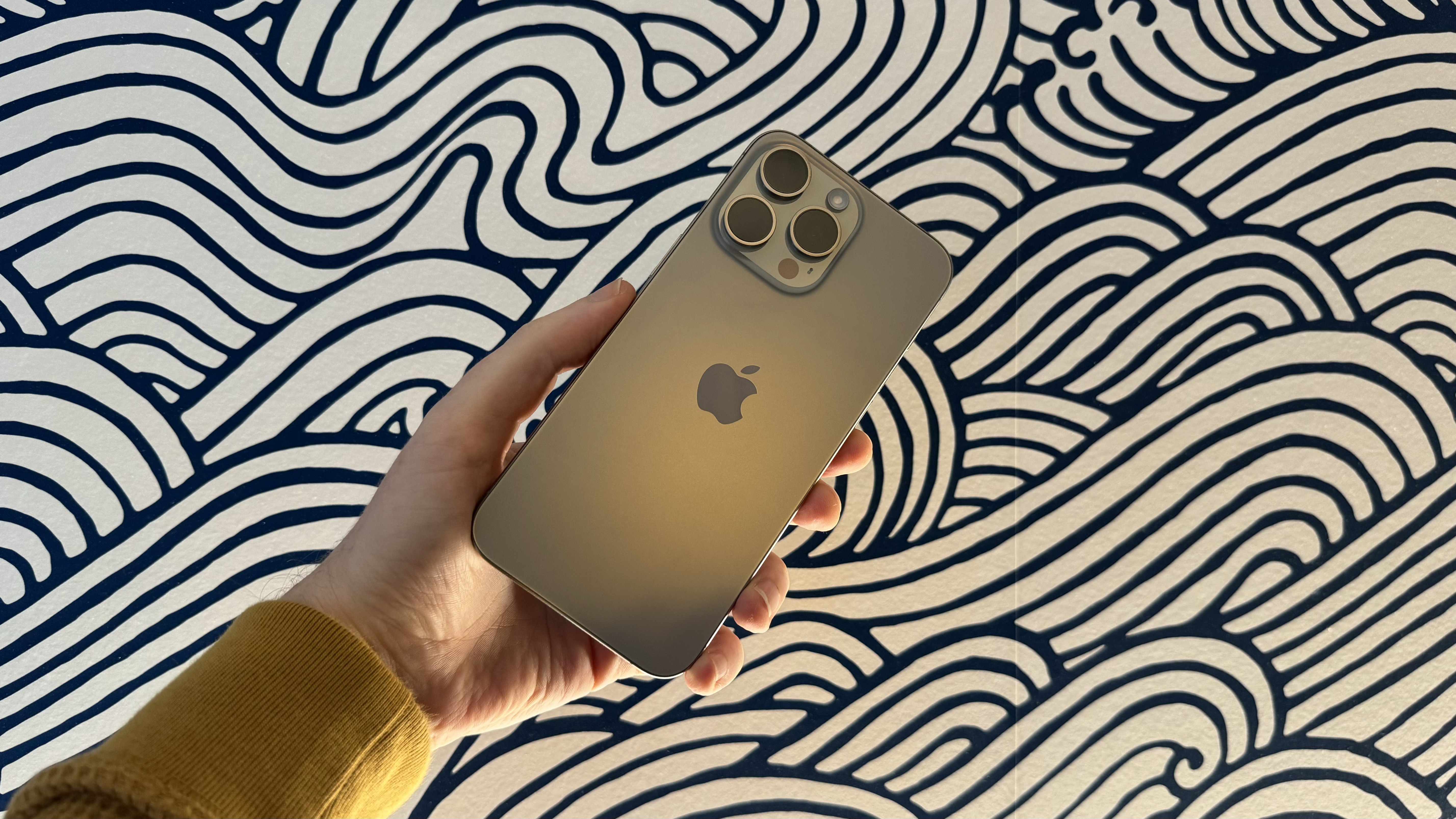
Getting to the back panel that much easier should at least drive down the cost of repair should the back glass become damaged.
How has Apple achieved this? In part by jumping from stainless steel in the construction to a tough titanium alloy. It’s still durable — it’s the same composite used by NASA in the Mars Rover program, to give you an idea of its ruggedness — but lighter at the same time. It can however be a fingerprint magnet — Apple has admitted the sides of new iPhone Pro handsets discolor after some use, though it’s not a permanent blemish, and a buff with a soft cloth cleans things up without a trace. But the trade-off for a more comfortable phone is worth this intermittent hassle.
The new design also improves repairability, allowing repairs to come in by removing the back panel as well as the front glass. It’s still a difficult process, and only the confident should consider a DIY repair. But getting to the back panel that much easier should at least drive down the cost of repair should the back glass become damaged.
A degree of water resistance is also present here. An IP68 rating means it’ll survive a dunking in 6 meters of fresh water for 30 minutes, but I wouldn’t risk putting that to the test — water resistance is not as hardy as waterproofing.
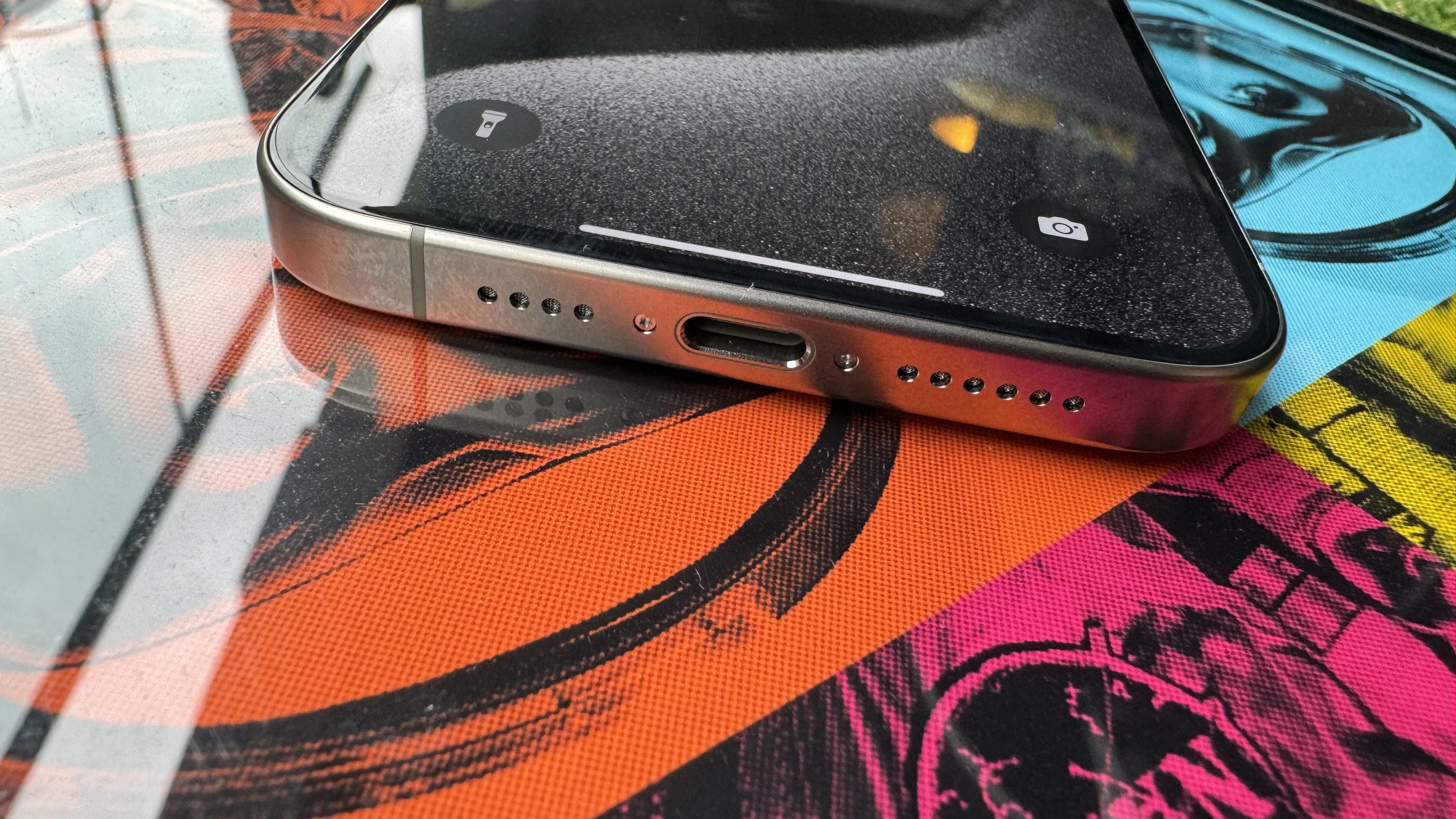
There are two new, big features to the external design of the iPhone 15 Pro Max this year. The first is one you’ve likely already read lots about — the introduction of USB-C, replacing the long-standing Lightning port for charging and data transfer. It’s great — more on that in its own section below in a minute, so let's move on to the other significant change. Gone too now is the mute switch on the left-hand side of the phone, replaced with an ‘Action Button’ that sits above the volume buttons. It works in a similar fashion to the Action button that debuted on the Apple Watch Ultra — press or long press it to activate preset functions, accompanied by haptic feedback.
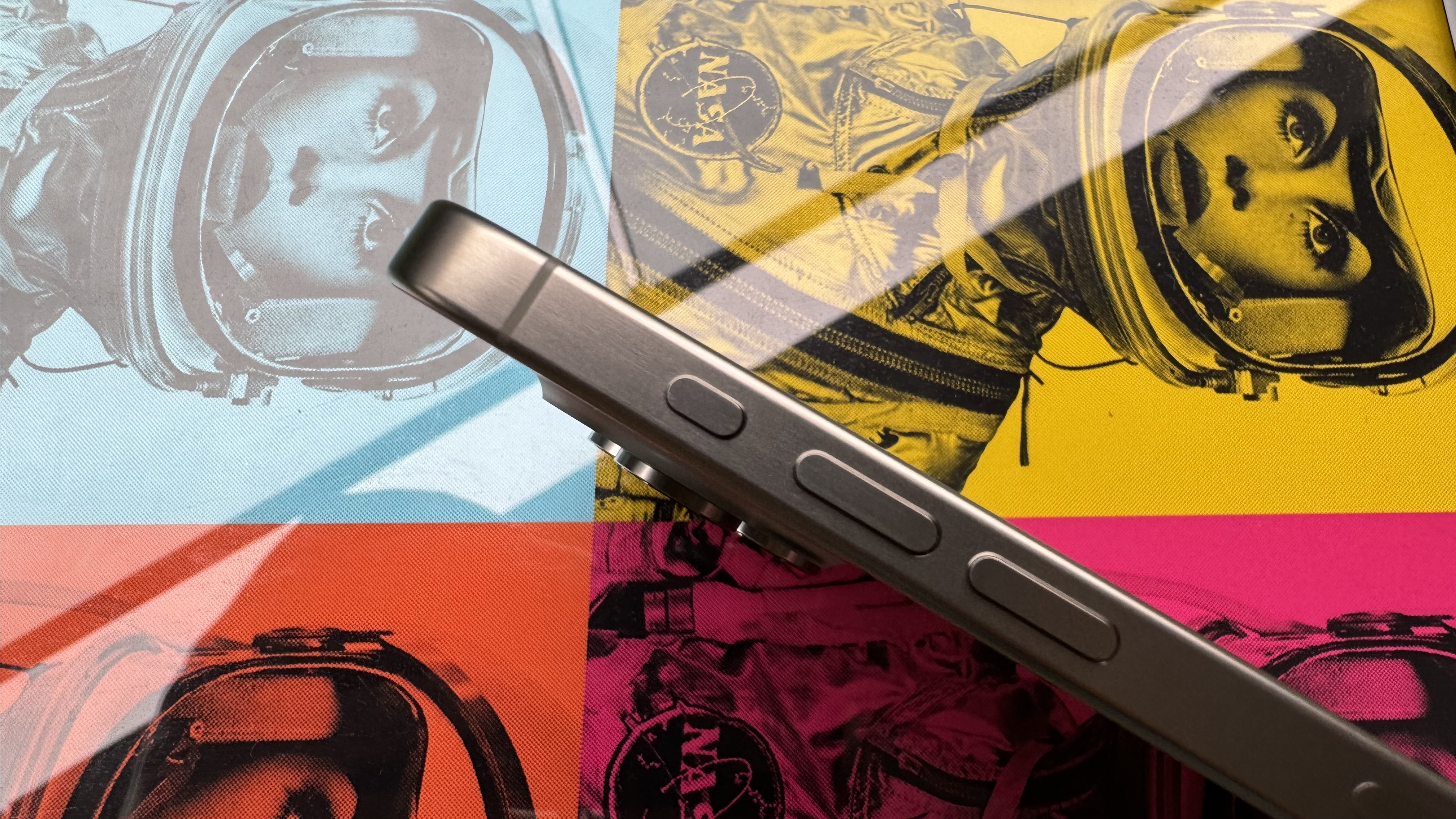
By default, the Action Button still acts as a mute switch, but through the settings menu, you can also set it to turn on a Focus mode, switch to a specific camera mode and use it as a shutter button, fire up the Flashlight, record a Voice Memo, bring up the Magnifier app or toggle an Accessibility feature. It can also be set to do… nothing. Why you’d choose that option, who knows? But it’s there. These are selected through a strange settings menu that shows the button on the side of the phone, letting you swipe through its functions. It feels very at odds with the rest of the iOS interface, and its styling can only be explained as a potential test-run for some Vision Pro interface look.
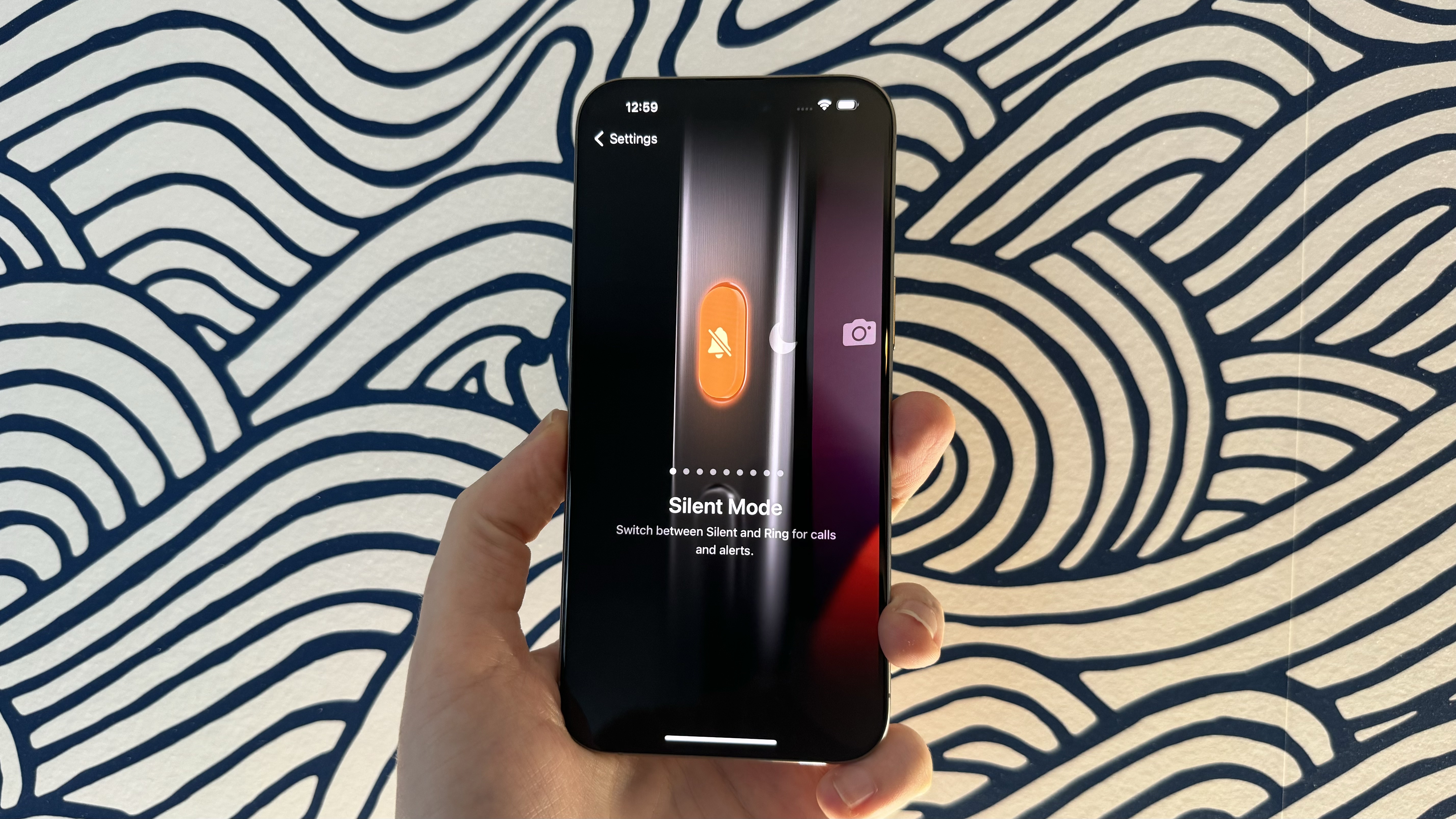
If you really want to take advantage of the Action Button to its full potential, you’re going to want to set it up with some Shortcuts. For the uninitiated, Shortcuts is a built-in app on iPhones, letting you automate many functions of the phone. Shortcuts can be assigned to a press of the Action Button, and with them, you can trigger almost any sequence of actions your iPhone could perform. You could switch on and off every smart bulb in your home, start a FaceTime call with a certain group of people, trigger a specific workout, and much much more — its potential is limited only by what your iPhone can do, your familiarity with the Shortcuts app, and your imagination.
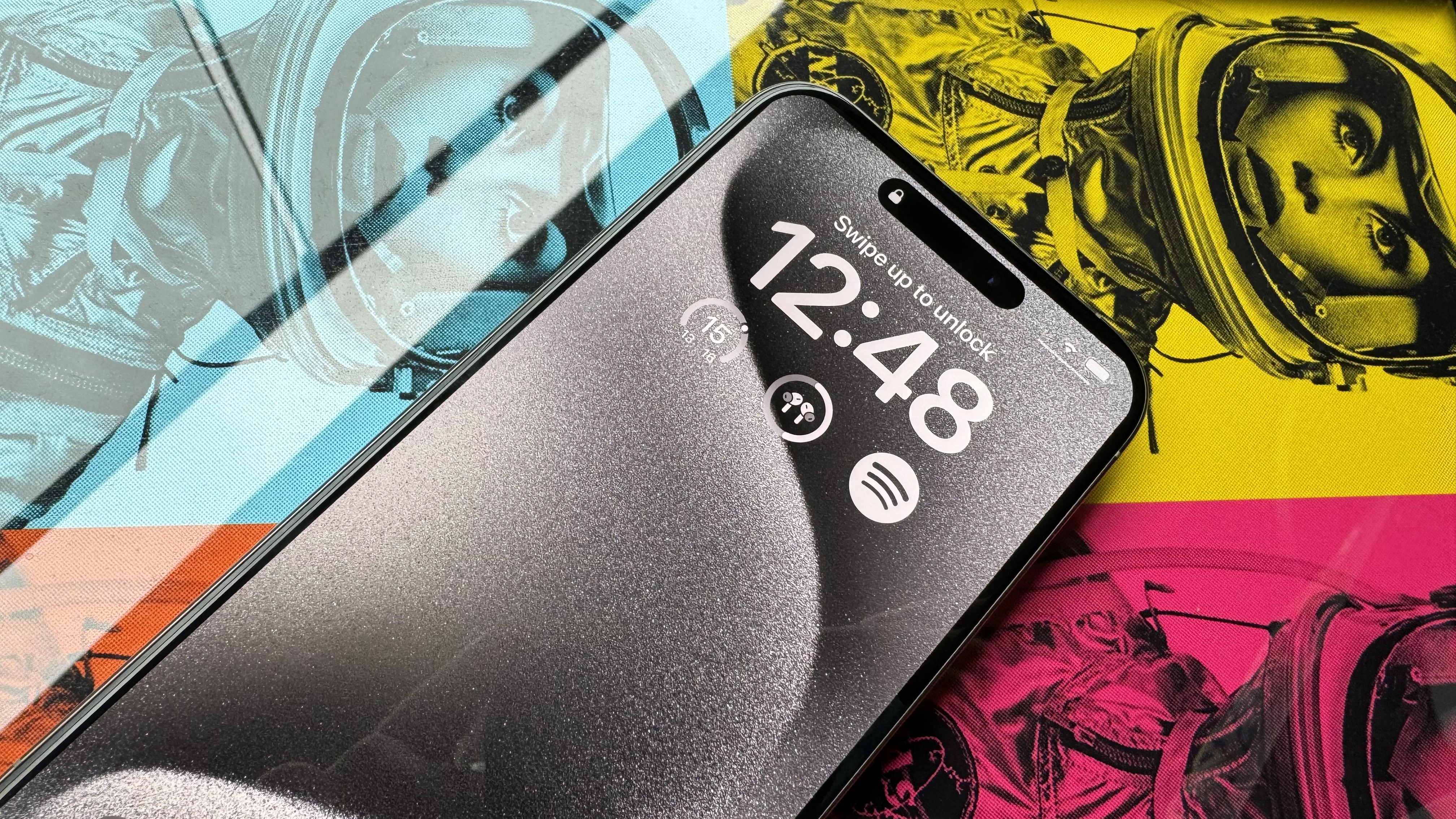
The OLED screen, as ever, will be one of the big draws of the iPhone 15 Pro Max, and it’s more prominent than ever thanks to the slim-line bezel the titanium build affords. The 6.7-inch display retains the super-smooth 120Hz ‘ProMotion’ refresh rate of its earlier counterparts and is a match for the 14 Pro Max at a 2796 x 1290 resolution (460 ppi). It remains a bold, bright screen, maxing out at a 2,000 nit peak brightness in direct sunlight, responsive to swipes and taps, and not too warm in its coloration. Returning from last year’s handsets is the Always On display feature (showing at a glance time and notification details even if the screen is locked), plus the Dynamic Island cutaway over the front-facing camera that intelligently shows app info, connectivity status, and more throughout the day. Dynamic Island still needs more developers to take its functionality seriously in my opinion, but it beats a static notch any day.
Wi-Fi 6E greatly increases direct transfer speeds between devices supporting the standard.
As for colors, the iPhone 15 Pro Max comes in four shades: Black Titanium, White Titanium, Blue Titanium, and Natural Titanium. They look lovely but are quite subdued, tinges of grey rather than the pastel shades the entry-level iPhone models offer. Those wanting a bit more pizazz will have to accessories with a jazzy case — just avoid Apple’s FineWoven options, which I’ve found get grubby quickly.
Looking at under-the-hood connectivity, the iPhone 15 Pro Max again supports 5G cellular networks, with support for Wi-Fi 6E (802.11ax) connections. That’ll speed up downloads and ensure stability with the latest networking protocols, but also greatly increases direct transfer speeds between devices supporting the standard — including the latest MacBooks and other iPhone 15 models. That’ll allow for AirDrop transfers twice as fast as previously (handy for the new iOS 17 NameDrop function, for instance). Bluetooth 5.3 will hook up your wireless accessories, and there’s a new Ultra Wideband chip that is used to increase the accuracy of the Find My network and associated accessories like AirTags.
Lastly, there’s now a Thread radio in the iPhone, ready for any potential explosion in the popularity of Matter smart home devices. Those in the US can also take advantage of a new Roadside Assistance service via satellite, but it wasn't available in the UK where I’m based.
iPhone 15 Pro Max Performance
As with the iPhone 15 Pro, the iPhone 15 Pro Max is packing in Apple’s new A17 Pro chipset. It’s a doozy — using a 3nm process to increase efficiency and speed, it includes a six-core CPU and six-core GPU. Apple’s quoting gains of 10% and 20% over the A16 Bionic chip there respectively — that’s the same chip you’d find in last year’s top-of-the-line iPhone 14 Pro and iPhone 14 Pro Max, as well as the one that powers the iPhone 15 and iPhone 15 Plus this year. Apple says it has souped up Neural Engine capabilities this year so that tasks that focus on Machine Learning can be carried out twice as fast too — things like image processing and on-device dictation from speech recognition. RAM gets a bump, up from 6GB to 8GB, though it’s a feature Apple doesn’t speak about, so you won’t find it on any official spec sheet.
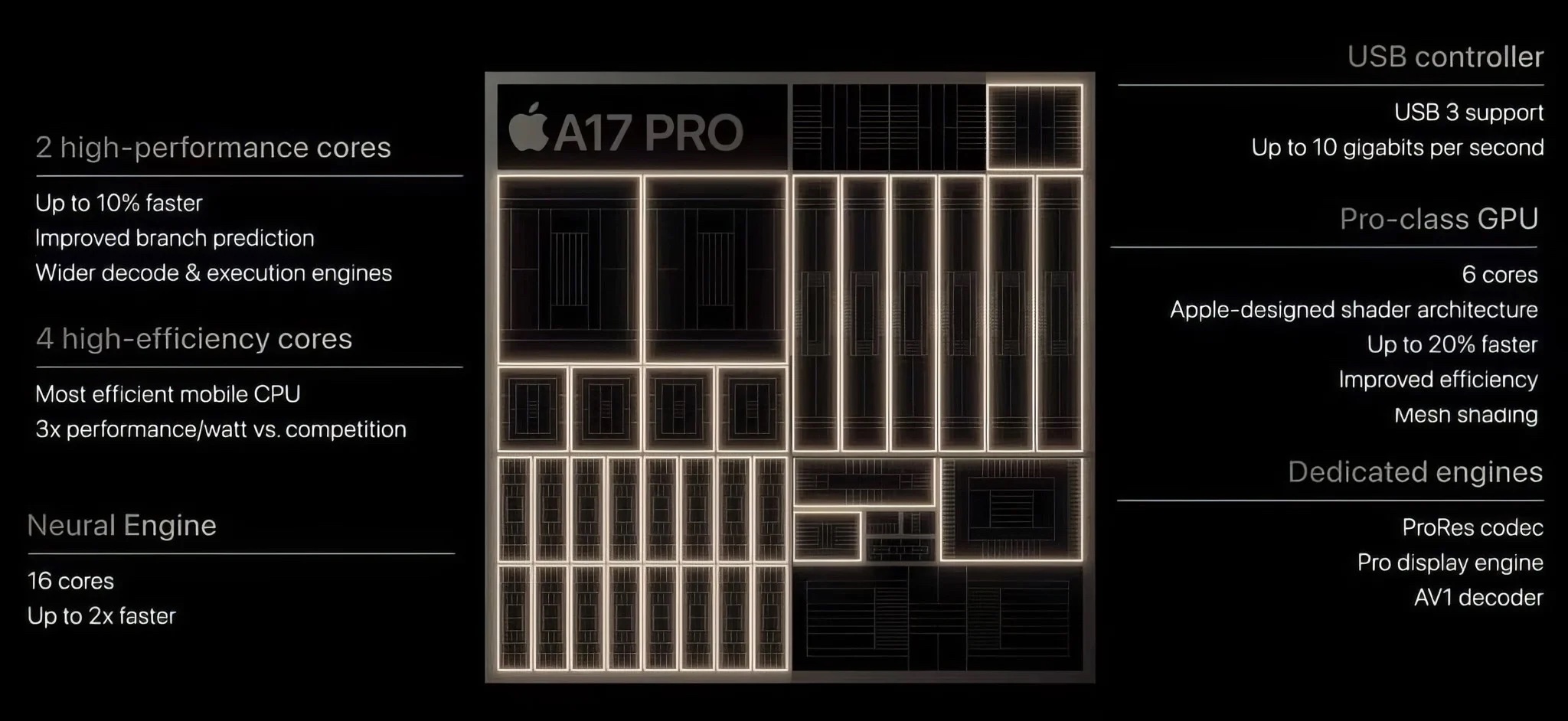
The reality is, for the average person jumping from last year’s top-end iPhones to this year’s, 99% of the time the difference will be imperceptible. But for anyone making the leap over a few generations of iPhone, it’s going to be significant. Again, Apple’s top-tier Pro devices are the fastest iPhones the company has ever made, and you’re going to struggle to find anything to tax them with. Apps launch instantaneously, crashes are rare to the point of irrelevance, and web pages load and scroll with silky smoothness. Jobs like pro-level image and video editing can be done with little compromise, right there on your phone.
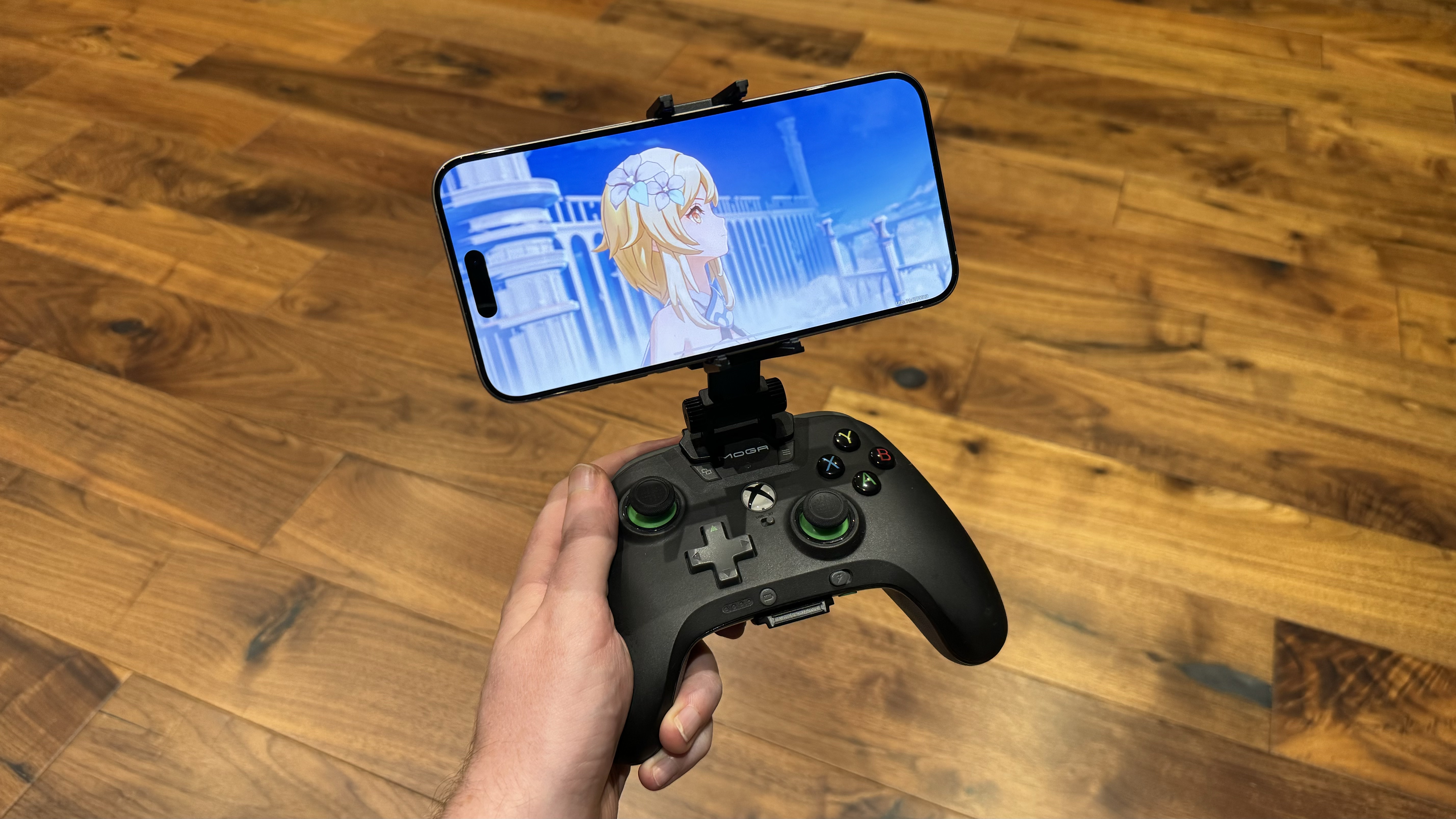
But the best may be yet to come for the iPhone 15 Pro Max. Apple has been courting the AAA gaming developers behind titles like Assassin’s Creed: Mirage, Resident Evil Village, and Death Stranding to squeeze these current-gen console titles onto iPhones. Making use of every trick in the graphical-fidelity book, they’ll feature the likes of Ray Tracing and MetalFX Upscaling (once the reserve of Macs) to make these ports look as close as possible to the definition presented by their console counterparts. Early reports based on demos of these titles look promising, pointing to a future where Apple’s handsets could be genuine competition for Sony’s PlayStation and Microsoft’s Xbox, not to mention Nintendo’s portable Switch. It’s a far cry from Angry Birds, and if Apple can work to bring more high-end devs on board — and not lose the potential and momentum here to a mere sales pitch for this generation of iPhones — it might really shake up the gaming market.
iPhone 15 Pro Max Camera
The great divide between the iPhone 15 Pro and the iPhone 15 Pro Max really starts to show with the camera. And it’s all down to the different optical zoom capabilities of the larger phone. Where the iPhone 15 Pro tops out at a 3x optical zoom, the iPhone 15 Pro Max can manage a 5x zoom, letting you get closer to a subject from a greater distance, and creating natural blur around a subject in close-up Portrait mode shots.
Apple achieves this with a new ‘tetraprism’ to achieve a periscope effect, folding light across four phases of a glass prism. This lets the light travel for longer in a relatively small space, achieving the zoom intensity while retaining the optical quality. Achieving zooms of this length can be a pain to keep stable, but Apple counteracts this with a new 3D sensor-shift module for autofocus and image stabilization, making minute adjustments to the sensor position up to 10,000 times per second to compensate for the natural tremble of your hand.
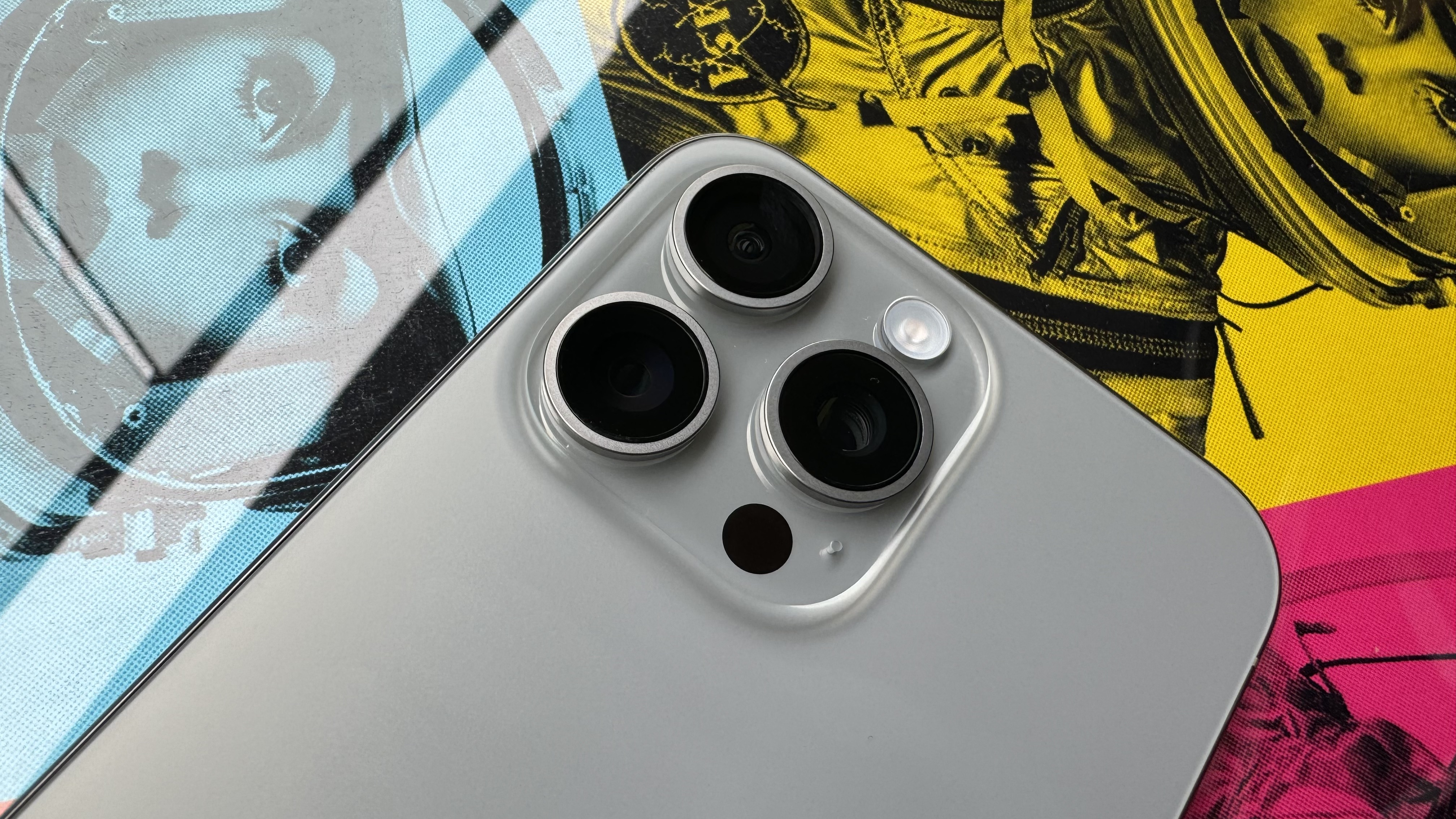
All put together, it allows for far more versatility in the type of shots you can achieve with an iPhone alone, and sees a gulf appear for photographers looking to pick between the two Pro models. It makes the 15 Pro Max the natural choice for those who take their photography seriously.
So let’s break it all down. By default, the 48MP camera now outputs 24MP images, double what the 14 Pro Max defaulted to. It’s still using that quad-pixel pipeline, but you’re yanking way more detail out of the sensor with each shot as a result. If you want to take advantage of the full, unadulterated 48MP, you’ve got HEIF and ProRAW formats for more editing flexibility down the road.
iPhone 15 Pro Max becomes the natural choice for those who take their photography seriously.
You can now tap your way through different focal lengths in the camera app too. It starts at the native 24mm, and then up through 28mm and 35mm length equivalents, regularly used by photographers looking to get more intimate views of their subjects. The 28mm and 35mm options are effectively a form of digital zoom, but the post-processing applied to the shots retains such detail that you’d be hard-pressed to notice the difference. You’ve then got the 2x zoom / 48mm telephoto option off the main sensor (again, it’s a digital zoom) and then up to the 120mm focal length of the fancy new 5x optical zoom lens. You’re left with a wide array of shooting options.
With the local London fauna a bit lacking (sorry for anyone hoping to see a shot of a deer or something…), here’s a look at those focal lengths in sequence, courtesy of a LEGO Jabba the Hutt photoshoot, from the 13mm wide angle right up to the new 120mm focal length afforded by the 5x optical zoom:






That 5x zoom also has great potential for accessibility uses too, benefiting the magnification capabilities of the phone for those with vision problems. Take a look at the difference in clarity of these bookshelf titles between the 1x zoom and the 5x zoom:

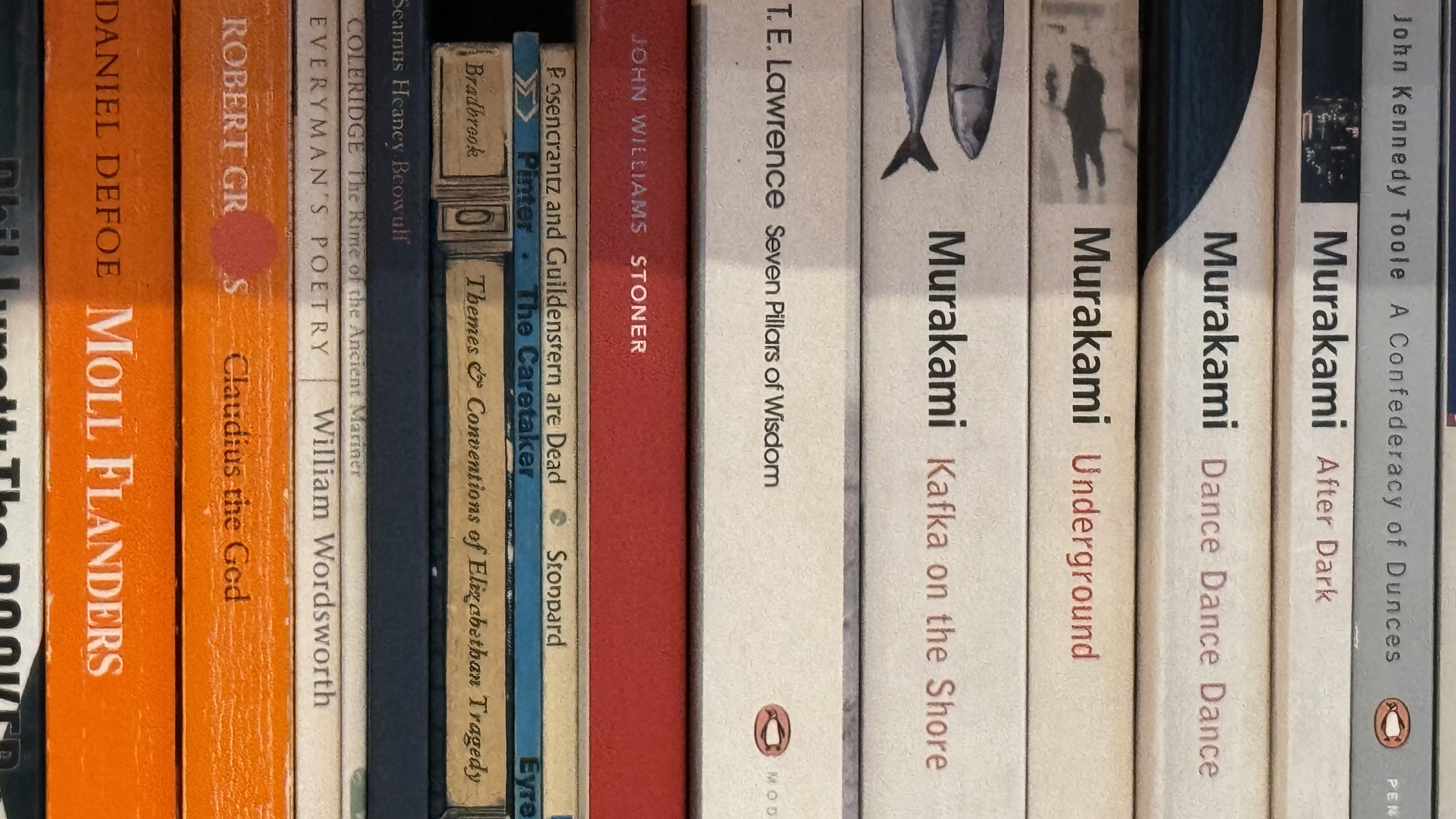
Digital zoom on the iPhone 15 Pro now stretches to a crazy 25x, but the results are as wobbly as you’d expect — look at the edges of this distant crane for example:

It’s great to be able to get such distant shots, but the Photonic Engine that processes these shots really has its work cut out filling in the gaps in detail. It’ll only get better with future generations though, as AI engines improve and get smarter at working out the real-world intent behind an image.
Whatever the focal or zoom length, I’m regularly impressed by the presentation of iPhone camera photos. There’s excellent HDR toning that helps to make the images ‘pop’, but the color accuracy, while ever-so-slightly idealized, never verges into blown-out, oversaturated territory that rivals do.
Portrait mode gets some nips and tucks too. For starters, they can now include the short video clips of Live Photos as part of the Portrait package. But it’s deeper integration with the Photonic Engine that pushes Portrait mode to the next level — so long as it recognizes a human face, or a cat or dog as the subject of a frame, any image can now be re-edited into a Portrait shot at a later date. The iPhone retains the depth map, letting you edit whether it’s the foreground or the subject in focus. It’s particularly powerful if you’re using the 5x zoom, as seen in the next shot, as the blurring is happening here as a natural byproduct of the lens, rather than being digitally enhanced later down the line:
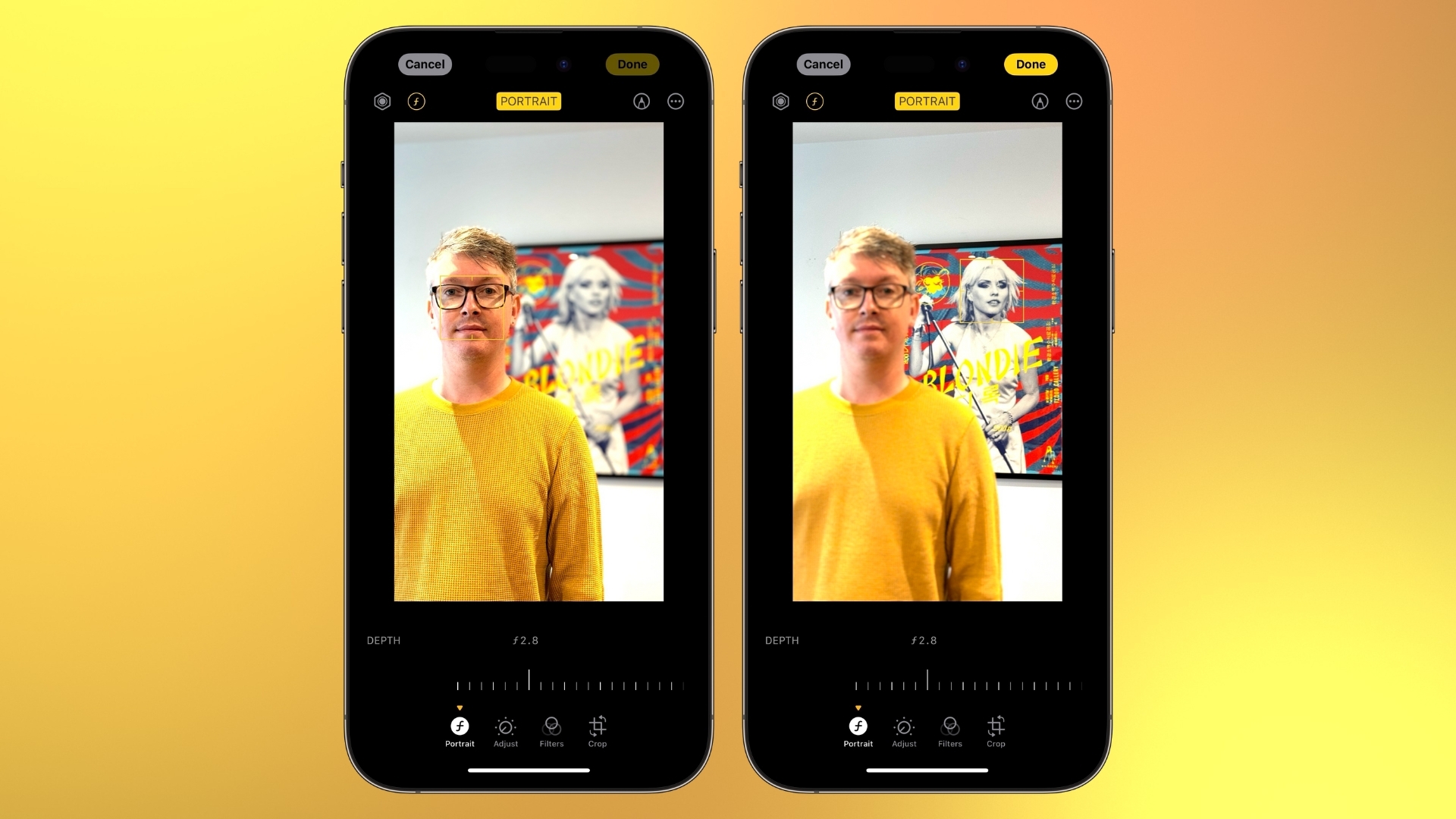
Macro mode is as impressive as ever, with great attention to detail and finding every tiny dash of color. I’d never noticed the little yellow stars within the stigma of this plant on my balcony before taking this shot!:

Again, the 5x zoom offers up more options for close-up macro-style shooting too. It’s not as detailed in this scenario as an actual macro shot but allows you to get really close to a subject without having to physically push right up against it.
Rounding off the improvements are low-light photography enhancements. I was already impressed with what I saw in my iPhone 15 Pro camera tests at a low-light gallery exhibition, so I pushed it a step further for the iPhone 15 Pro Max. These shots of some PlayMobil Back to the Future characters were taken in a room with black-out blinds drawn — about as close to complete darkness as you can manage in a London apartment. Aside from some slight blurring (which would have been avoided had I used a stabilizing tripod), the amount of information pulled out of such little light going into the sensor is truly amazing:

If you’re looking for 4K video capture changes, there are some great additions for those with professional workflows. Cinematic mode can now push that continuous zoom up to 3x, while ProRes footage can now include Log encoding. Paired with the industry standard Academy Encoding System (ACES), footage shot on an iPhone will now be far easier to color grade to a professional standard, alongside videos captured from other device sources. The huge amounts of data these formats can generate can now easily be offloaded to a USB-C hard drive too (provided it has a minimum 220Mb/s write speed and uses no more than 4.5W of power), thanks to the inclusion of the new port, making the iPhone a more convenient tool in a filmmaker’s arsenal.
iPhone 15 Pro Max Battery and USB-C Features
If you’re after an iPhone to give the Duracell bunny a run for its money, the iPhone 15 Pro Max is the handset for you. This thing goes on, and on, and on. Apple quotes 29 hours of offline video playback, the same as it did for the iPhone 14 Pro Max.
In the short term, USB-C means there's going to be a LOT of redundant Lightning cables. But this will ultimately, eventually, be a good green move.
So there’s no leap here, but the stat remains impressive. I blew past a day without a charge for the 15 Pro Max, downloading apps, streaming music and video, browsing the web, making calls, and other general usage. Stream 4K video all day and play high-end games and you’ll run it down quicker, sure. But, as with last year’s model, you’ll quite happily, regularly, go more than an entire day without rushing for a charger. MagSafe charging, allowing for magnetically-fixed wireless power delivery up to 15W, is present again, and remains one of the best features Apple has ever added to its phones.
Long rumored, and basically a given since the European Union forced Apple's hand, the iPhone 15 Pro Max this year features a USB-C port for charging and data transfer, killing off Apple’s proprietary Lightning charging-and-data connection.
It's a long-awaited inclusion that's important for two reasons. Firstly, it's good for the Earth - with a standardized charging and data port across the majority of modern electronics, in the long term there will be less e-waste as users keep charging cables and accessories across their entire gadget collection. Sure, in the short term, there's going to be a LOT of redundant Lightning cables. But this will ultimately, eventually, be a good green move.
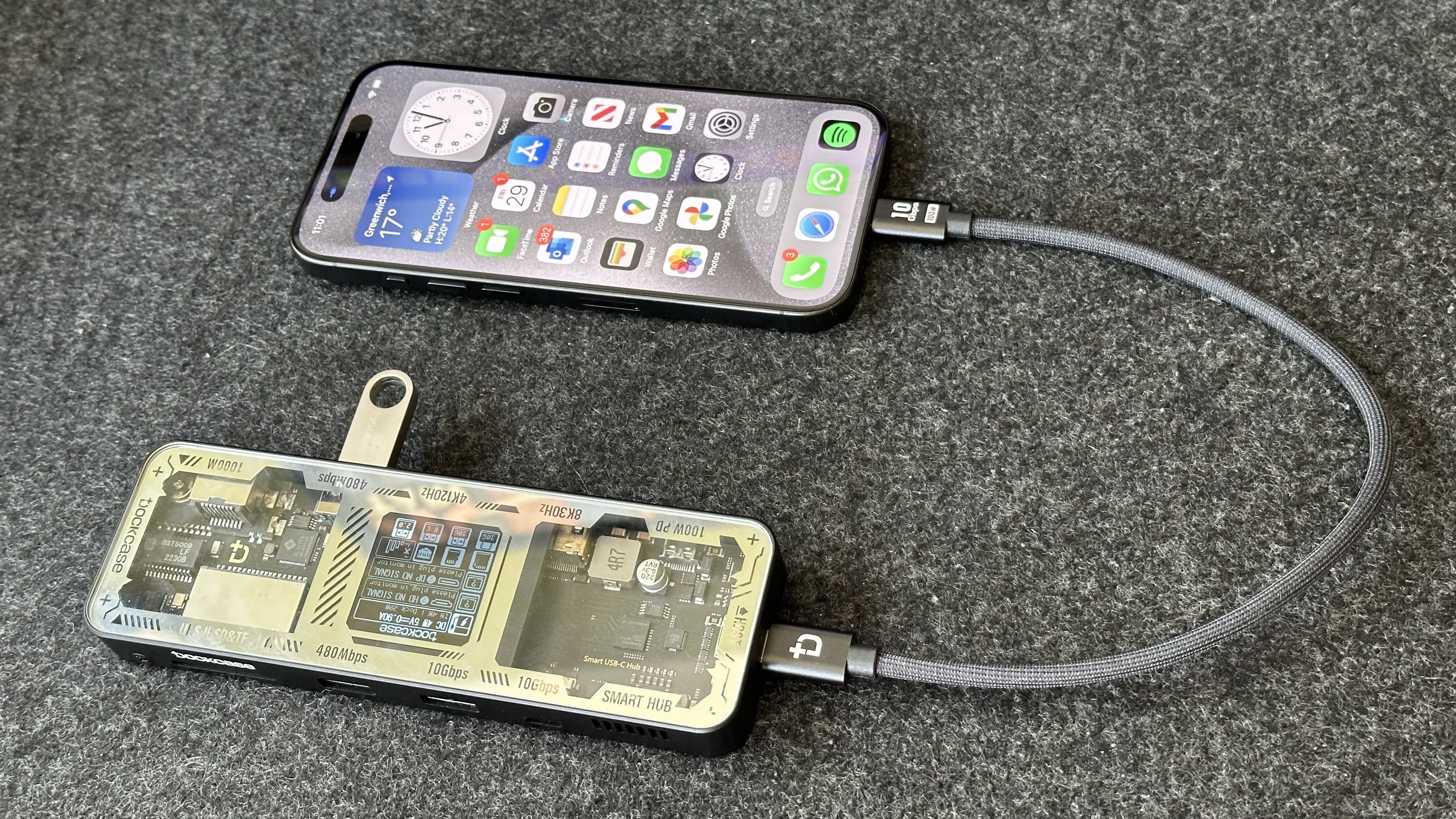
Secondly, and more excitingly, it opens the iPhone up to all manner of USB-C accessories that were not available to it previously. It's not just the convenience of being able to charge your iPhone, MacBook, and iPad off the same power supply. It's being able to hook up a USB-C dock for screen mirroring; it's the ability to plug in a hard drive for offloading high-resolution video files; it's being able to use audiophile headphones and DACs without the need for an adapter. You can even charge other devices, like your AirPods, from the iPhone 15 Pro.
Apple has been uncharacteristically open when it comes to letting essentially any accessory work with the iPhone USB-C port — though it has been stingy with the included USB-C cable, which isn't high-spec enough to reach the full potential transfer speeds USB-C is capable of. The iPhone 15 Pro Max’s port is a USB 3.2 variant, capable of transfer speeds of up to 10Gbps, but the USB 2 cable in the box caps out at 480Mbps. Likewise, Apple hasn't dialed up any charging speeds with the port — it still maxes out at 50 percent in 30-ish minutes with a 20W (or higher) charger. No slouch, but not breaking new ground.
iOS 17
iOS 17 is this year’s update to the iPhone operating system, and it’s ready out of the box for iPhone 15 Pro Max. It’s been a generally well-received iteration on iPhone’s touch-focussed OS, with a number of smart additions.
Most useful — and eye-catching — is the new StandBy mode function. It works particularly well on the iPhone 15 Pro Max, given its larger screen size, turning your phone into a smart display when left in a landscape orientation and plugged into a charger or placed on a MagSafe charging stand. It can show customizable widgets, such as clocks and calendars, as well as photo slideshows, making it something of a competitor to Amazon’s Echo Show devices. Smart night-time awareness means that, in use as a bedside clock, it won’t burn your retinas in the darkness.
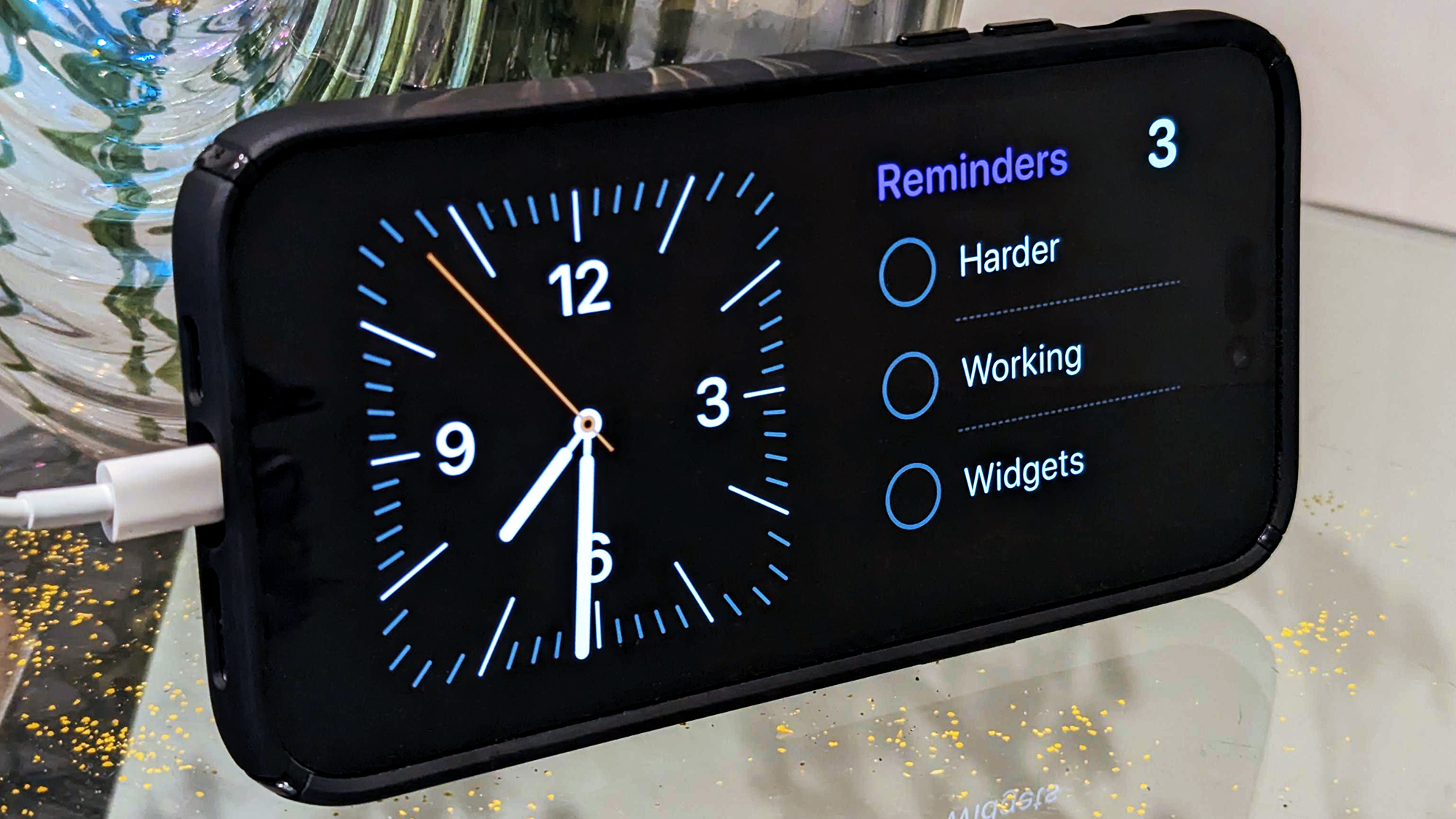
Contact Posters let you add some personalized flair to what contacts and callers see when they ring or receive calls from your iPhone. Working in a similar fashion to iOS 16’s Homescreen customization options, you can pick a picture to represent you, as well as fonts and color filters, that appear when someone is trying to get in touch with you. These can also be shared using the new NameDrop feature, activated via NFC when tapping two iPhones together, effectively killing off the need for business cards.
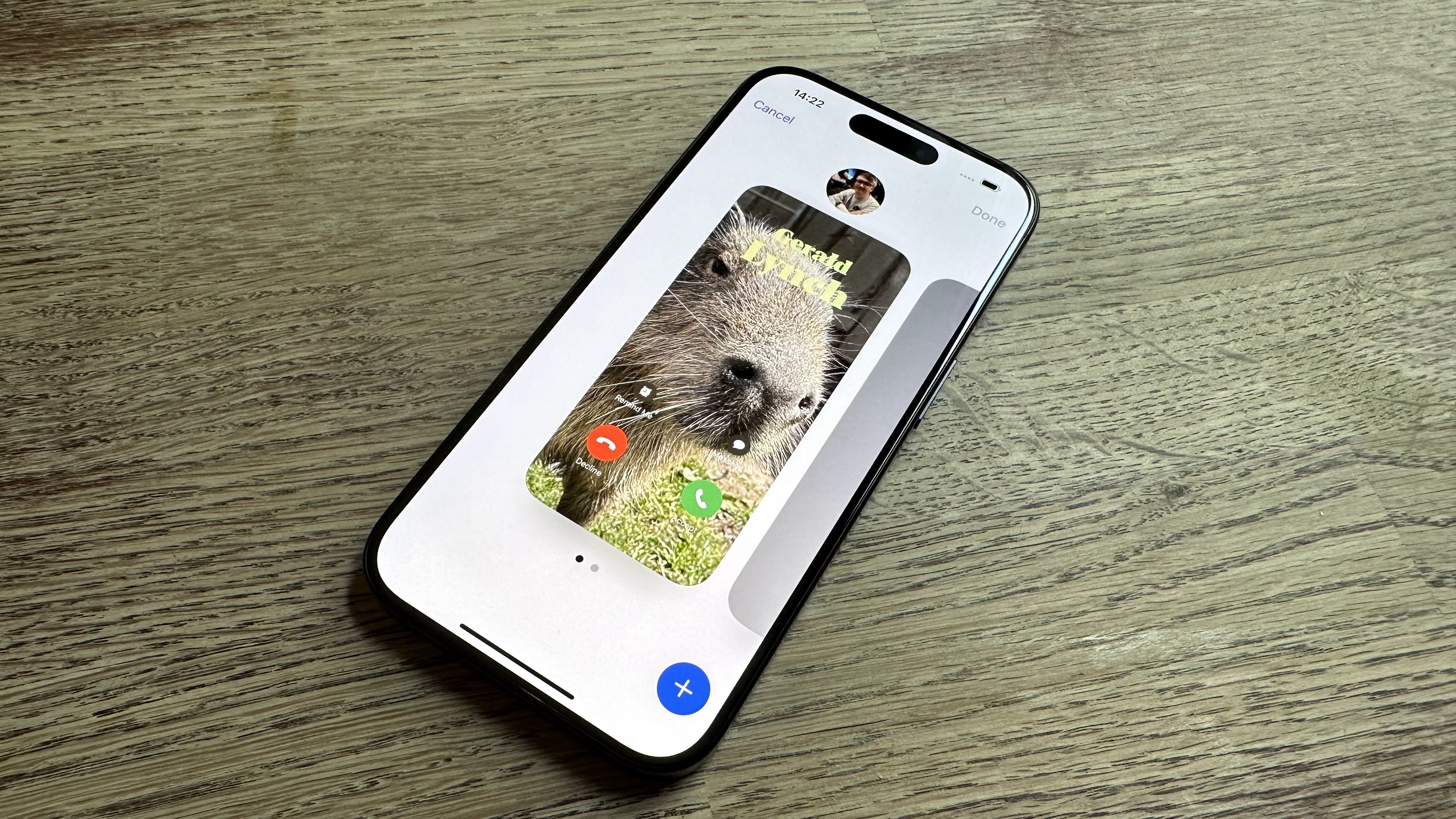
Home Screen widgets are now interactive — you can input data or interact with content direct from a Home Screen, without having to open up the associated app. This is old news to Android users, but much sought after on iOS.
The last big additions come to messaging and FaceTime. Messages will now transcribe audio notes if you’re not in a position to listen to them, while you can also turn on a Check In feature to let friends know your whereabouts automatically while traveling. Keyboard autocorrect has been smartened up via a new language model. FaceTime gets new video voicemail options if you miss a call, and can now take and make calls via an Apple TV 4K by using the Continuity Camera feature from iOS 16.
- Read more: iOS 17 review: top ten features ranked
Returning iOS features, as ever, make for a great smartphone experience. Apple has a knack for making familiar and approachable interface decisions, and intuitive interaction options, and that hasn’t changed. For those invested in the wider eco-system of Apple Watch, iPad, and Mac, cross-platform integrations such as HandOff, SideCar, and the general iCloud connective tissue make interoperability between devices a breeze.
How about the iPhone 15 Pro?
As those who have read my iPhone 15 Pro review will know, I have a soft spot for Apple’s smaller-but-still-premium handset. The iPhone 15 Pro, in most respects, is a good match for someone who wants the power of the iPhone 15 Pro Max, but in a more portable frame. I personally consider its 6.1-inch size more comfortable in everyday long-term use than the Pro Max, but that’s perhaps less of a concern for you.
But there are still some core differences between the two to be aware of when making your choice.
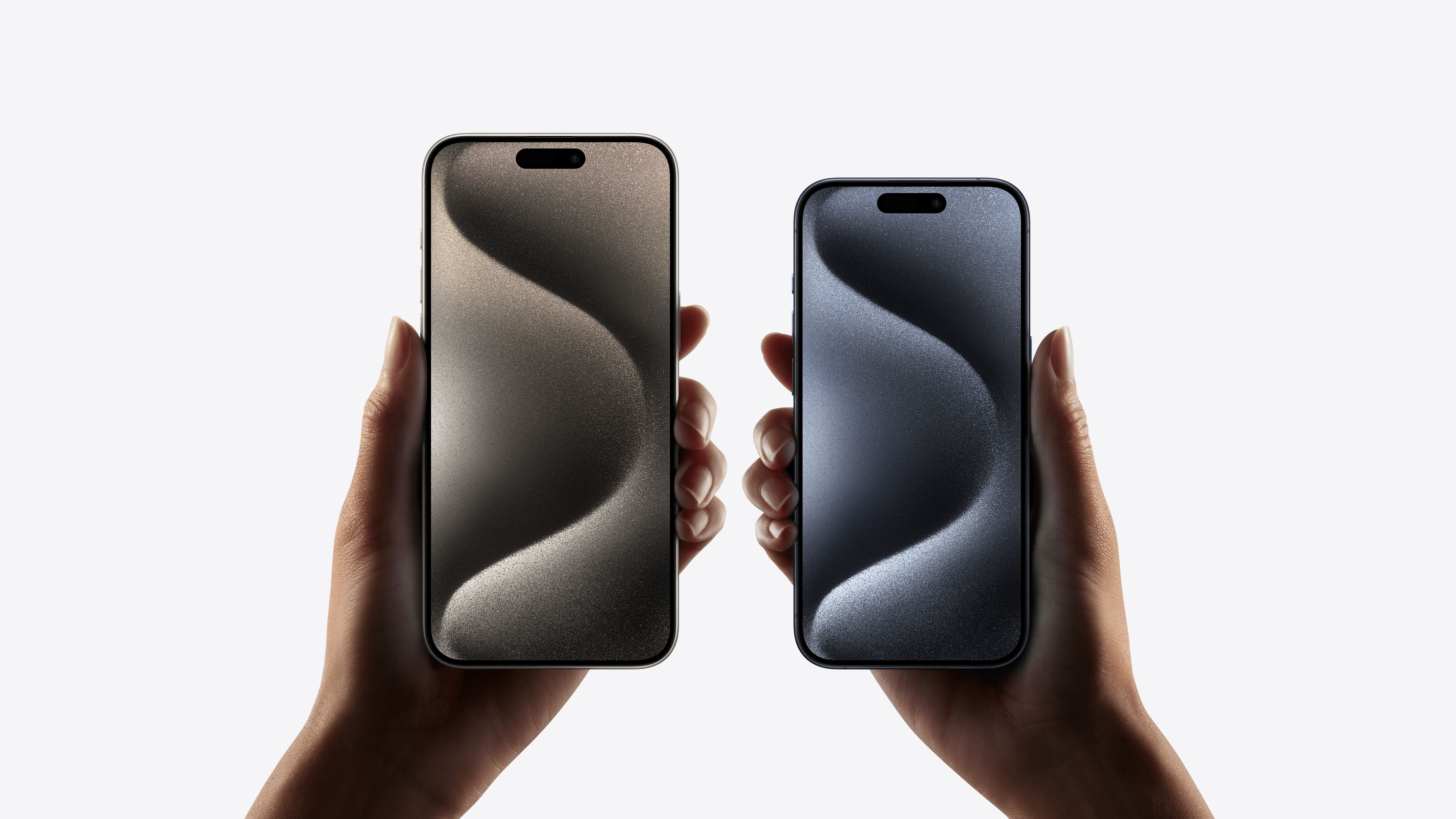
First, to reiterate, screen size: the iPhone 15 Pro is smaller at 6.1 inches compared to the 6.7-inch iPhone 15 Pro Max. But that also makes it lighter — 187g compared to 221g.
Camera and battery differences are where the biggest gaps emerge. As mentioned earlier, though the iPhone 15 Pro can take great photos, its zoom range is limited to a 3x optical option, compared to the Pro Max’s 5x optical. If you’re expecting to take lots of long-distance photography (or want the flexibility for extreme close-ups at close range), the 15 Pro Max is your best bet. And if you find yourself always reaching for a charger with a low battery warning popping off, you’ll want the Pro Max too — Apple rates its battery at up to 29 hours of video playback compared to the iPhone 15 Pro’s 23 hours. While that’s an ‘in-theory’ estimate, in practice it means even the most demanding of smartphone users are more likely to get an entire day’s worth of playtime out of the Pro Max than the Pro.
- Read more: iPhone 15 Pro vs iPhone 15 Pro Max
The Pro Max is obviously more expensive too, starting at $1199 compared to the iPhone 15 Pro’s $999 starting price — but remember that the 15 Pro Max comes with more storage as standard: 256GB vs 128GB. Regardless, both are great phones. Don’t feel like you’re missing out too much if you can’t stump up the cash for the Pro Max, or prefer the smaller screen size.
Should you buy the iPhone 15 Pro Max?
Buy the iPhone 15 Pro Max if...
You’re serious about photography
Apple’s Pro Max iPhone already took superb pictures, but the flexibility of the 5x optical zoom opens up even more possibilities.
You push your iPhone to the limits each day
With a super-fast chip, a large screen, and generous battery life, the iPhone 15 Pro Max can support demanding tasks all day long with ease.
A large screen (and price tag) doesn’t worry you
It’s large, but it’s lighter than ever. It’s expensive, but it starts with more storage than before. You get what you pay for, and here you’re paying for the best of the best.
Don’t buy the iPhone 15 Pro Max if...
You only take some casual selfie snaps
This is a fairly complex camera system, and if you’re not worried about zoom levels, focal lengths, and pixel counts, its extra benefits vs expense may be lost on you.
You’re not doing anything taxing with your current phone
The power on offer here, and battery life, are designed for those who drive their smartphones hard every day. You may be able to get by with something less flashy.
You’ve got last year’s Pro iPhone
There are significant changes to the iPhone 15 Pro Max not seen in the 14 Pro Max line-up, but not enough to justify a year-on-year upgrade unless you simply can’t live without the latest device.
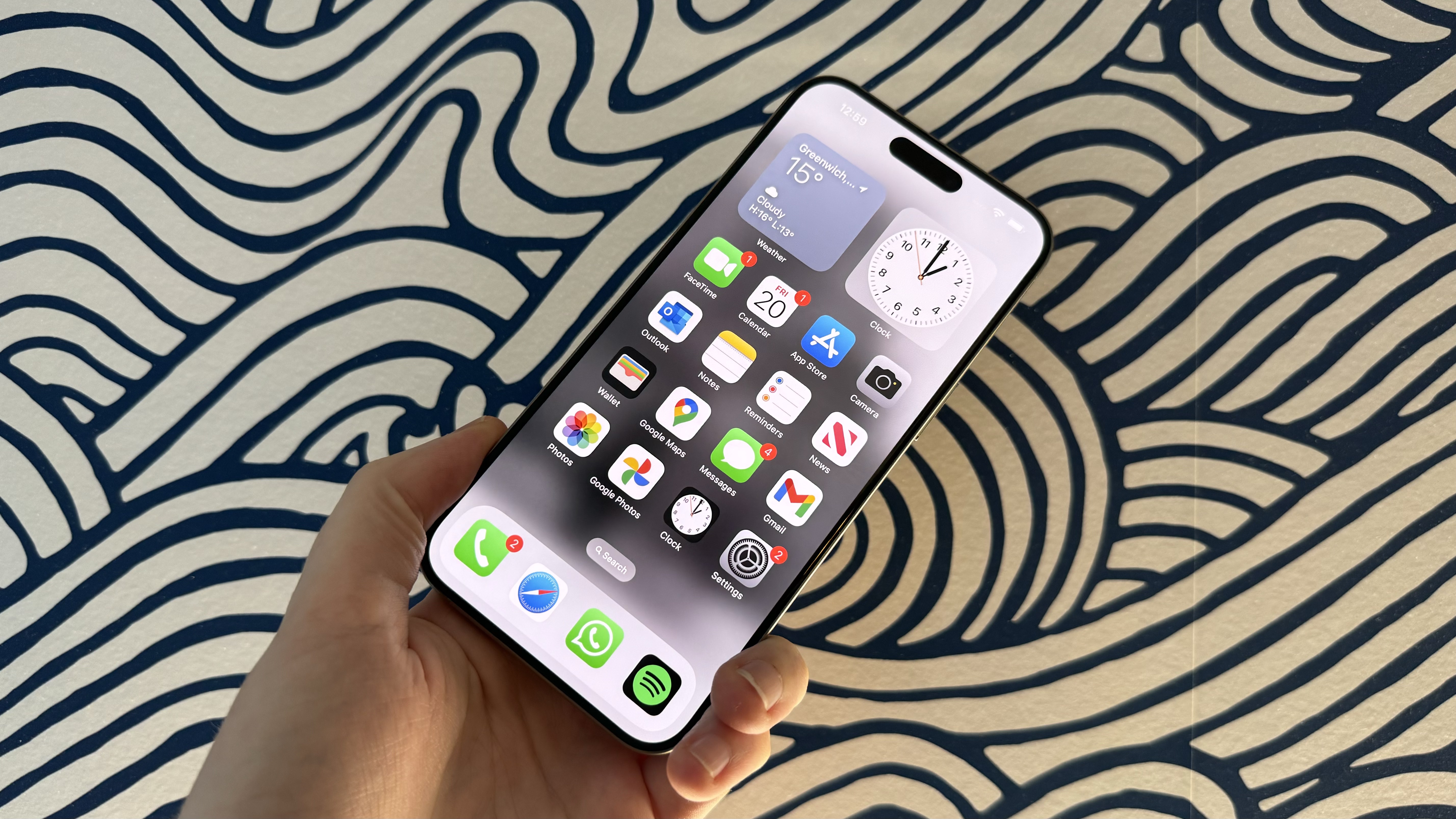
Verdict
It’d be hard to separate me from my love of the iPhone 15 Pro — its smaller size will forever be more comfortable in my eyes. But even I, the Pro Max skeptic, have to admit that the iPhone 15 Pro Max is an absolute wonder-phone.
It’s not just that headlining camera spec that has won me over — though its superiority is clear to see. But the re-balancing of the weight afforded by the titanium frame, the battery boost, and the potential for luxurious gaming possibilities on that giant screen have seen the premium iPhone get its hooks in me.
It starts at a higher price point, yes, but with a higher entry storage level to match, so arguments about cost increases are essentially moot — even if it remains an expensive device. With early overheating issues seemingly stamped out, the iPhone 15 Pro Max gets a hearty recommendation, earns its five-star status, and easily sits atop the best iPhone rankings by some distance.

Bottom line: Apple's top-of-the-line smartphone is the best handset it has ever made — and the best phone in the world. It's excellent camera zoom, flexible Action Button, large and vibrant screen, and superb battery life make it the one to beat.

Gerald Lynch is the Editor-in-Chief of iMore, keeping careful watch over the site's editorial output and commercial campaigns, ensuring iMore delivers the in-depth, accurate and timely Apple content its readership deservedly expects. You'll never see him without his iPad Pro, and he loves gaming sessions with his buddies via Apple Arcade on his iPhone 15 Pro, but don't expect him to play with you at home unless your Apple TV is hooked up to a 4K HDR screen and a 7.1 surround system.
Living in London in the UK, Gerald was previously Editor of Gizmodo UK, and Executive Editor of TechRadar, and has covered international trade shows including Apple's WWDC, MWC, CES and IFA. If it has an acronym and an app, he's probably been there, on the front lines reporting on the latest tech innovations. Gerald is also a contributing tech pundit for BBC Radio and has written for various other publications, including T3 magazine, GamesRadar, Space.com, Real Homes, MacFormat, music bible DIY, Tech Digest, TopTenReviews, Mirror.co.uk, Brandish, Kotaku, Shiny Shiny and Lifehacker. Gerald is also the author of 'Get Technology: Upgrade Your Future', published by Aurum Press, and also holds a Guinness world record on Tetris. For real.
